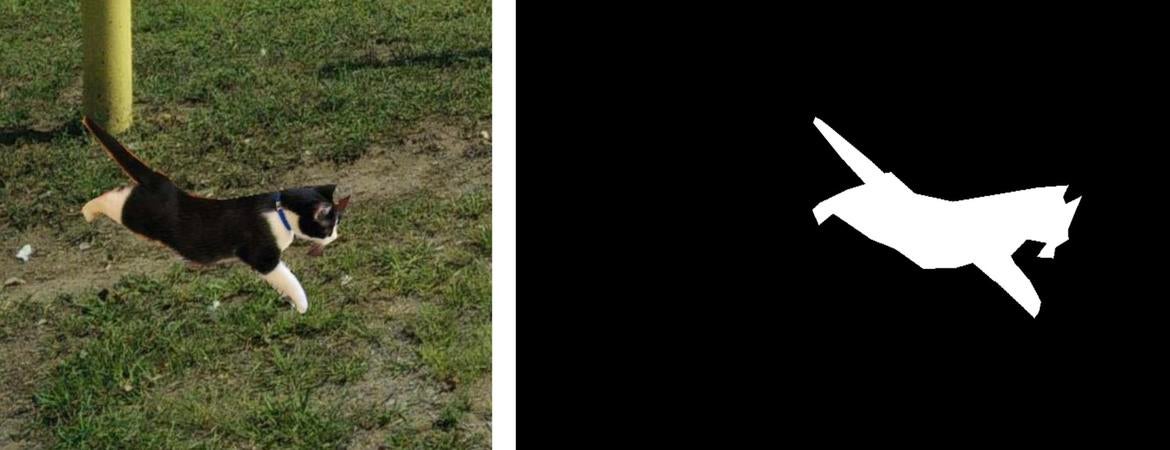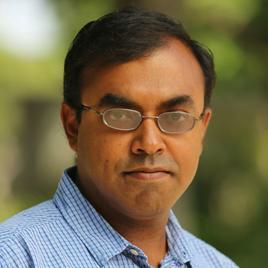
Seeing was believing until technology reared its mighty head and gave us powerful and inexpensive photo-editing tools. Now, realistic videos that map the facial expressions of one person onto those of another, known as deepfakes, present a formidable political weapon.
But whether it’s the benign smoothing of a wrinkle in a portrait, or a video manipulated to make it look like a politician saying something offensive, all photo editing leaves traces for the right tools to discover.
Research led by Amit Roy-Chowdhury’s Video Computing Group at the University of California, Riverside has developed a deep neural network architecture that can identify manipulated images at the pixel level with high precision. Roy-Chowdhury is a professor of electrical and computer engineering and the Bourns Family Faculty Fellow in the Marlan and Rosemary Bourns College of Engineering.
A deep neural network is what artificial intelligence researchers call computer systems that have been trained to do specific tasks, in this case, recognize altered images. These networks are organized in connected layers; “architecture” refers to the number of layers and structure of the connections between them.
Objects in images have boundaries and whenever an object is inserted or removed from an image, its boundary will have different qualities than the boundaries of objects in the image naturally. Someone with good Photoshop skills will do their best to make the inserted object looks as natural as possible by smoothing these boundaries.
While this might fool the naked eye, when examined pixel by pixel, the boundaries of the inserted object are different. For example, inserted boundaries are often smoother than the natural objects. By detecting boundaries of inserted and removed objects, a computer should be able to identify altered images.
The researchers labeled nonmanipulated images and the relevant pixels in boundary regions of manipulated images in a large dataset of photos. The aim was to teach the neural network general knowledge about the manipulated and natural regions of photos. They tested the neural network with a set of images it had never seen before, and it detected the altered ones most of the time. It even spotted the manipulated region.
“We trained the system to distinguish between manipulated and nonmanipulated images, and now if you give it a new image it is able to provide a probability that that image is manipulated or not, and to localize the region of the image where the manipulation occurred,” Roy-Chowdhury said.
The researchers are working on still images for now, but they point out that this can also help them detect deepfake videos.
“If you can understand the characteristics in a still image, in a video it’s basically just putting still images together one after another,” Roy-Chowdhury said. “The more fundamental challenge is probably figuring out whether a frame in a video is manipulated or not.”
Even a single manipulated frame would raise a red flag. But Roy-Chowdhury thinks we still have a long way to go before automated tools can detect deepfake videos in the wild.
“It’s a challenging problem,” Roy-Chowdhury said. “This is kind of a cat and mouse game. This whole area of cybersecurity is in some ways trying to find better defense mechanisms, but then the attacker also finds better mechanisms.”
He said completely automated deepfake detection might not be achievable in the near future.
“If you want to look at everything that’s on the internet, a human can’t do it on the one hand, and an automated system probably can’t do it reliably. So it has to be a mix of the two,” Roy-Chowdhury said.
Deep neural network architectures can produce lists of suspicious videos and images for people to review. Automated tools can reduce the amount of data that people — like Facebook content moderators — have to sift through to determine if an image has been manipulated.
For this use, the tools are right around the corner.
“That probably is something that these technologies will contribute to in a very short time frame, probably in a few years,” Roy-Chowdhury said.
The paper, “Hybrid LSTM and Encoder–Decoder Architecture for Detection of Image Forgeries,” is published in the July 2019 issue of IEEE Transactions on Image Processing and was funded by DARPA. Other authors include Jawadul H. Bappy, Cody Simons, Lakshmanan Nataraj, and B. S. Manjunath.
In related work, his group developed a method for detecting other types of image manipulation in addition to object insertion and removal. This method extends the identification of blurry boundaries into general knowledge about the kinds of transitions between manipulated and nonmanipulated regions to predict tampering more accurately than current tools.
This research, “A Skip Connection Architecture for Localization of Image Manipulations,” was presented in June at the Computer Vision and Pattern Recognition Workshop on Image Forensics and funded by the Department of Health and Human Services. Other authors include Ghazal Mazaheri, Niluthpol Chowdhury Mithun, and Jawadul H. Bappy.
Header photo is taken from Fig. 5 of Hybrid LSTM and Encoder–Decoder Architecture for Detection of Image Forgeries and shows the boundary of a cat inserted into a photo. The original photo and the labeled boundary were among the photos used to train the neural network.




